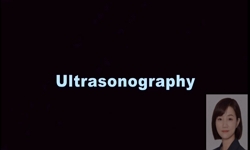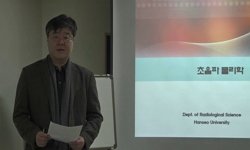목적 : 장기적인 조류 성장억제 효과를 위하여 초음파 1차 조사 종료 이후 일정기간 조류 성장억제가 지속된 후 Microcystis aeruginosa (M. aeruginosa)의 재성장 시 초음파의 재조사(re-irradiation)를 통...
http://chineseinput.net/에서 pinyin(병음)방식으로 중국어를 변환할 수 있습니다.
변환된 중국어를 복사하여 사용하시면 됩니다.
- 中文 을 입력하시려면 zhongwen을 입력하시고 space를누르시면됩니다.
- 北京 을 입력하시려면 beijing을 입력하시고 space를 누르시면 됩니다.
https://www.riss.kr/link?id=A108560001
- 저자
- 발행기관
- 학술지명
- 권호사항
-
발행연도
2023
-
작성언어
Korean
-
주제어
Ultrasound ; Algal growth inhibition ; Microcystis aeruginosa ; Regrowth ; Re-irradiation ; 초음파 ; 조류 성장억제 ; M. aeruginosa ; 재성장 ; 재조사
-
KDC
539
-
등재정보
KCI등재
-
자료형태
학술저널
- 발행기관 URL
-
수록면
190-200(11쪽)
- 제공처
-
0
상세조회 -
0
다운로드
부가정보
국문 초록 (Abstract)
목적 : 장기적인 조류 성장억제 효과를 위하여 초음파 1차 조사 종료 이후 일정기간 조류 성장억제가 지속된 후 Microcystis aeruginosa (M. aeruginosa)의 재성장 시 초음파의 재조사(re-irradiation)를 통해 Microcystis aeruginosa의 성장억제 효과를 조사하고, 조류 성장억제 효율과 효과의 지속성을 확인하기 위하여 실험실 규모 실험을 진행하였으며 이를 바탕으로 다양한 분석을 진행하였다.
방법 : 대조군 A(0 hr)과 초음파 1차 조사만 적용한 실험군 B(2 hr), 2차 조사를 적용한 실험군 C(0.5 hr), D(1 hr), E(1.5 hr)으로 구분하여 각 조건별로 실험을 진행하였다. 초음파 조사 조건은 주파수(frequency) 23 kHz, 출력(intensity) 6.94 W L-1으로 적용하였으며, 초음파 2차 조사의 경우 1차 조사 이후 조류가 재성장(regrowth)하는 시점(7 day)에 초음파 재조사를 진행하였다.
결과 및 토의 : Chlorophyll-a (Chl-a) 및 M. aeruginosa의 개체수(cell number) 분석 결과, 초음파 1차 조사만 적용한 실험군(B)은 저감 이후 조류의 급격한 재성장이 진행된 반면, 초음파 2차 조사를 적용한 실험군(C, D, E)은 초음파의 조사시간이 줄어들어도 조류의 재성장이 지연되는 것을 확인하였다 비성장속도(μ)와 일차분해속도(k)를 도출한 결과, 재성장 기간 동안 초음파 2차 조사를 적용한 실험군(C, D, E)은 반복적인 조류 성장 불능화로 인하여 초음파 1차 조사만 적용한 실험군(B) 대비 성장률이 상대적으로 낮은 것을 확인하였다. 또한 SEM, TEM 분석 결과, 초음파의 영향으로 조류 세포의 손상이 뚜렷하게 관측되었으며 대조군 대비 실험군은 M. aeruginosa 세포 내 기낭의 분포 감소와 세포막의 변형을 관찰하였다.
결론 : 본 연구를 통해 초음파 조사에 의한 조류 성장억제 효과를 확인하였으며, 초음파의 재조사는 반복적인 조류성장 불능화(inactivation)에 기여하여 재조사 시, 1차 조사 대비 초음파 조사시간을 단축하여도 조류의 재성장에 필요한 시간은 더욱 증가되는 것을 확인하였다. 따라서, 정체수역 내 장기적 조류 성장억제를 위해서는 주기적인 초음파 조사가 필요하나, 초음파의 적정 조사 주기는 실제 현장의 규모, 조류 발생정도, 수온, 광량, 영양염류, 유속 등 다양한 복합적 인자의 영향에 따라 상이할 것으로 예상되며, 최적화된 초음파 조사 프로토콜을 수립하기 위해서는 다양한 조건에서의 부지특이성을 고려한 현장 연구가 필요할 것으로 판단된다.
다국어 초록 (Multilingual Abstract)
Objectives : To confirm both efficiency and sustainability of algal growth inhibition, various laboratory-scale experiments were conducted and the growth inhibitory effect of Microcystis aeruginosa (M. aeruginosa) was investigated through ultrasonic r...
Objectives : To confirm both efficiency and sustainability of algal growth inhibition, various laboratory-scale experiments were conducted and the growth inhibitory effect of Microcystis aeruginosa (M. aeruginosa) was investigated through ultrasonic re-irradiation during the regrowth period after the first ultrasound irradiation.
Methods : Experiments with different times of irradiation [i.e., control group A (0 hr), experimental group B (2 hr) applied with only the first ultrasound irradiation, and experimental group C (0.5 hr), D (1 hr), and E (1.5 hr) applied with both first and second irradiations] were performed.
Results and Discussion : As a result of both Chlorophyll-a (Chl-a) concentration and cell number of M. aeruginosa, the experimental group (B) with only first ultrasound irradiation (2 hr) displayed rapid regrowth of algae after initial decrease whereas the experimental group (C, D, and E) with both first ultrasound irradiation (2 hr) and second ultrasound irradiation (0.5 hr, 1 hr, and 1.5 hr) confirmed the delay of algae regrowth. Based on the specific growth rate constant (μ) and first order decay rate constant (k), algal growth from the experimental groups (C, D, E) with the secondary ultrasound irradiation was more significantly inhibited due to repetitive inactivation of algae growth. According to the SEM and TEM results, damages to algae cells were clearly observed under the influence of ultrasound, and both decrease in gas vesicles and rupture of cell membrane in M. aeruginosa were also monitored.
Conclusion : Through this study, the algae growth inhibitory effect by ultrasonic irradiations was confirmed, and the re-irradiation of ultrasound contributed to the repetitive inactivation of algae growth, indicating that the second ultrasonic irradiation time required to inhibit algal regrowth can be reduced compared to the first irradiation. Therefore, periodic ultrasonic irradiation is required for long-term inhibition of algae growth in stagnant waters, but the appropriate frequency of ultrasonic irradiation may vary depending on the influence of various complex factors such as the size of the stagnant waters, the frequency of algal blooms, water temperature, light irradiation, nutrients, flow rate, etc. Finally, many field studies under various conditions are warranted to establish an optimized ultrasound irradiation protocol.
목차 (Table of Contents)
- 1. 서론
- 2. 재료 및 방법
- 3. 결과 및 고찰
- 4. 결론
- References
- 1. 서론
- 2. 재료 및 방법
- 3. 결과 및 고찰
- 4. 결론
- References
동일학술지(권/호) 다른 논문
-
군산시 대기오염물질 배출량 조사에 관한 연구(2015~2019)
- 대한환경공학회
- 박상훈(Sang-Hun Park)
- 2023
- KCI등재
-
산업부산물 특성을 활용한 토양개량제의 적절한 혼합량 도출 및 작물생육 연구
- 대한환경공학회
- 봉재은(Jae Eun Bong)
- 2023
- KCI등재
-
입력 자료 측정빈도에 따른 클로로필-a 농도 예측 자동 머신러닝 모형 성능 비교
- 대한환경공학회
- 박정수(Jungsu Park)
- 2023
- KCI등재
-
- 대한환경공학회
- 김지혜(Jihye Kim)
- 2023
- KCI등재





 DBpia
DBpia






